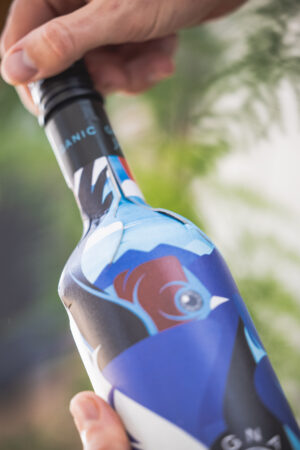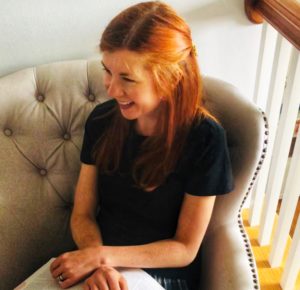Growing and making wine can be done sustainably. According to Grand View Research, the production of organic wine is projected to grow 10.2 percent between 2022 and 2030, and the space devoted to organic growing has increased in France alone by 249 percent in the past decade. While hard numbers are difficult to come by, renewable energy — generally in the form of solar power — fuels many wine production facilities across the globe.
The problem arises when attention turns to packaging that wine. About 29 percent of a wine’s carbon footprint comes from its glass bottle alone, according to a study conducted by the Wine Institute in California. Between 50 and 68 percent of that output is from the production and transportation of that glass. (Keep in mind that, according to many estimates, more than half of the wine bottles used by U.S. producers are shipped from China.)
There’s also the issue of recycling. Once that wine has been consumed, recycling rates vary significantly from state to state, with the highest rates in Maine, Vermont and Michigan. Currently, only 10 states have bills in place that incentivize citizens to recycle bottles with $0.05+ return bonuses. Overall, the U.S. recycles 31 percent of its glass bottles.
In an inherently connected global market, there’s no easy solution to the packaging conundrum. But there are plenty of options.
Flat Plastic Bottles
London-based Packamama, previously known as Garçon Wines, produces eco-flat wine bottles made from 100 percent recycled PET material.

The goal, Packamama’s commercial director Amelia Dales explains, is purely environmental: Recycled PET produces 79 percent fewer greenhouse gas emissions and uses 90 percent less energy to produce, according to a study from the ALPLA group. PET is also 87 percent lighter than the average wine bottle, reducing the carbon needed during transportation. PET is also more frequently recycled than glass; according to the World Economic Forum, it is the most commonly recycled material in the world.
Producers are responding with enthusiasm. This year, Packamama surpassed its millionth bottle milestone, with exponential growth forecast. Bold-faced clients include Accolade Wines, LVMH’s Chateau Galoupet and Ron Rubin.
“In the first four months of 2022, we reached the same volume of bottles as the past four years combined,” Dales explains.
There is one obvious drawback: long-term aging in PET is not recommended. But because an estimated 90 percent of consumers drink a bottle within two weeks of purchase, the vast majority of wine could conceivably be packaged this way.
Paper Bottles
 Frugalpac, based in Ipswich, created the world’s first paper bottle for wine, spirits and olive oils in 2020. The bottle is made from 94 percent recycled paperboard, with a pouch that holds the liquid; together, it is five times lighter than a glass bottle, and uses six times less carbon and energy to produce and dispose of, says CEO Malcolm Waugh. All told, a Frugalpac bottle cuts the carbon emission of an average wine bottle by 84 percent.
Frugalpac, based in Ipswich, created the world’s first paper bottle for wine, spirits and olive oils in 2020. The bottle is made from 94 percent recycled paperboard, with a pouch that holds the liquid; together, it is five times lighter than a glass bottle, and uses six times less carbon and energy to produce and dispose of, says CEO Malcolm Waugh. All told, a Frugalpac bottle cuts the carbon emission of an average wine bottle by 84 percent.
As with a PET bottle, a Frugalpac bottle is not intended for long-term aging; consumption within 12 months is recommended.
 But the wineries that have signed on, from Signal 7 in the United States to Cantina Goccia in Italy, appear to be delighted.
But the wineries that have signed on, from Signal 7 in the United States to Cantina Goccia in Italy, appear to be delighted.
“We are proud to have made history as the first winemakers to have launched their wine in a paper bottle,” says Cantina Goccia’s co-owner, Ceri Parke. “Finding an alternative to glass that would preserve the integrity of our wines, while delivering significant carbon savings was a challenge — but one that was crucial for us to overcome. The Frugal Bottle fulfilled both those criteria in the shape of a beautiful, tactile Bordeaux bottle. The feedback from industry and consumers continued to be so overwhelmingly positive that it prompted Cantina Goccia to commit to transitioning 80 percent of our wine production to paper bottles.”
Cantina Goccia estimates it’s saved 23 metric tons of carbon by switching from glass to paper.
Boxed Wine
Jason Haas, winemaker at Paso Robles’ Tablas Creek, farms organically and biodynamically, uses renewable energy and consistently assesses the winery’s carbon footprint. This year, he launched an audacious experiment for a premium brand: he introduced a $95 boxed wine, citing the 84 percent savings in carbon footprint by switching from bottles to boxes.
 “I floated the idea of producing a Patelin Rosé on Twitter, and I got a heartwarmingly enthusiastic response,” he says. Ultimately, Tablas Creek produced 3L bag-in-box packages of its 2021 rosé, passing on the packaging savings to customers, who received four bottles (which would normally cost $112) for $95. (The release amounted to 100 cases of wine bottles, or 300 boxes of the larger-format 3-liter bag-in-boxes).
“I floated the idea of producing a Patelin Rosé on Twitter, and I got a heartwarmingly enthusiastic response,” he says. Ultimately, Tablas Creek produced 3L bag-in-box packages of its 2021 rosé, passing on the packaging savings to customers, who received four bottles (which would normally cost $112) for $95. (The release amounted to 100 cases of wine bottles, or 300 boxes of the larger-format 3-liter bag-in-boxes).
“I was hoping we’d sell out in a month,” Hass says. “Instead, we sold out in four hours and are making a second batch to be released in May. Later this summer, we’ll be doing batches of our Patelin de Tablas and Patelin de Tablas Blanc.”
Lighter Bottles, Bottling in Situ
Many wineries and regions that aren’t ready to give up a classic glass bottle are finding ways to create greener alternatives.
The Sicilia DOC appellation has more organic grapes under vine than any other region in Italy, and, as part of its sustainability mission, many producers are working with lightweight bottles made from 90 percent recycled glass. (The glass is sourced from used wine bottles on the island.) The Consorzio di Tutela Vini Sicilia DOC is currently evaluating whether the whole appellation can embrace this approach.
“We are using raw material from Sicily, bottling the wine in Sicily and selling it locally, creating an entirely closed loop economic exercise,” explains Letizia Russo, board member of the Sicilia DOC.
In Argentina, at Mendoza’s Domaine Bousquet, the team is collaborating with its U.S. importer, Origins Organic Imports, to bottle wine in California. “The majority of the Domaine Bousquet wine bottles are lightweight already, allowing us to fit 30 percent more in a shipping container,” says Labid al Ameri, Origins Organic Imports’ president. “But we wanted to lower the footprint further, so we are experimenting with bottling for the U.S. market in California.”
![Plastic shipping containers for wine [iStock]](https://wineindustryadvisor.com/wp-content/uploads/2022/05/istockphoto-1334407776-612x612-1.jpg)
Wine on Tap
For wine regions like Colorado, where the vast majority of the wine gets consumed in-state by locals and visitors, winemakers are also pioneering greener ways to serve their customers.
“We learned a lot from local breweries,” admits Carboy Winery’s co-owner Kevin Webber. “There are more than 600 breweries and taprooms in Colorado, and the culture is really strong. In our tasting rooms in Denver and Breckenridge, we serve most of our wine straight out of 300-gallon Brite Tanks.”
![[Photo courtesy Carboy Winery]](https://wineindustryadvisor.com/wp-content/uploads/2022/05/Carboy_wine_taps2-300x192.jpg)
Winemaker and co-founder of Colorado’s Sauvage Spectrum Patric Matysiewski says wine on-tap programs have been “going strong” in Colorado for a decade.
![[Photo courtesy Carboy Winery]](https://wineindustryadvisor.com/wp-content/uploads/2022/05/Brite-Tank-Serving-Vessles-300x400.jpeg)
From sustainability to aesthetics, there’s a lot to consider when picking packaging. For a deep dive on all of the packaging options for producers, check out the packXplore Conference on May 25, 2022. The Wine Industry Network conference will help wineries navigate the world of wine packaging, at the intersection of design, innovation, consumer engagement and sustainability.
__________________________________________________________
Kathleen Willcox

Kathleen Willcox writes about wine, food and culture from her home in Saratoga Springs, N.Y. She is keenly interested in sustainability issues, and the business of making ethical drinks and food. Her work appears regularly in Wine Searcher, Wine Enthusiast, Liquor.com and many other publications. Kathleen also co-authored a book called Hudson Valley Wine: A History of Taste & Terroir, which was published in 2017. Follow her wine explorations on Instagram at @kathleenwillcox




